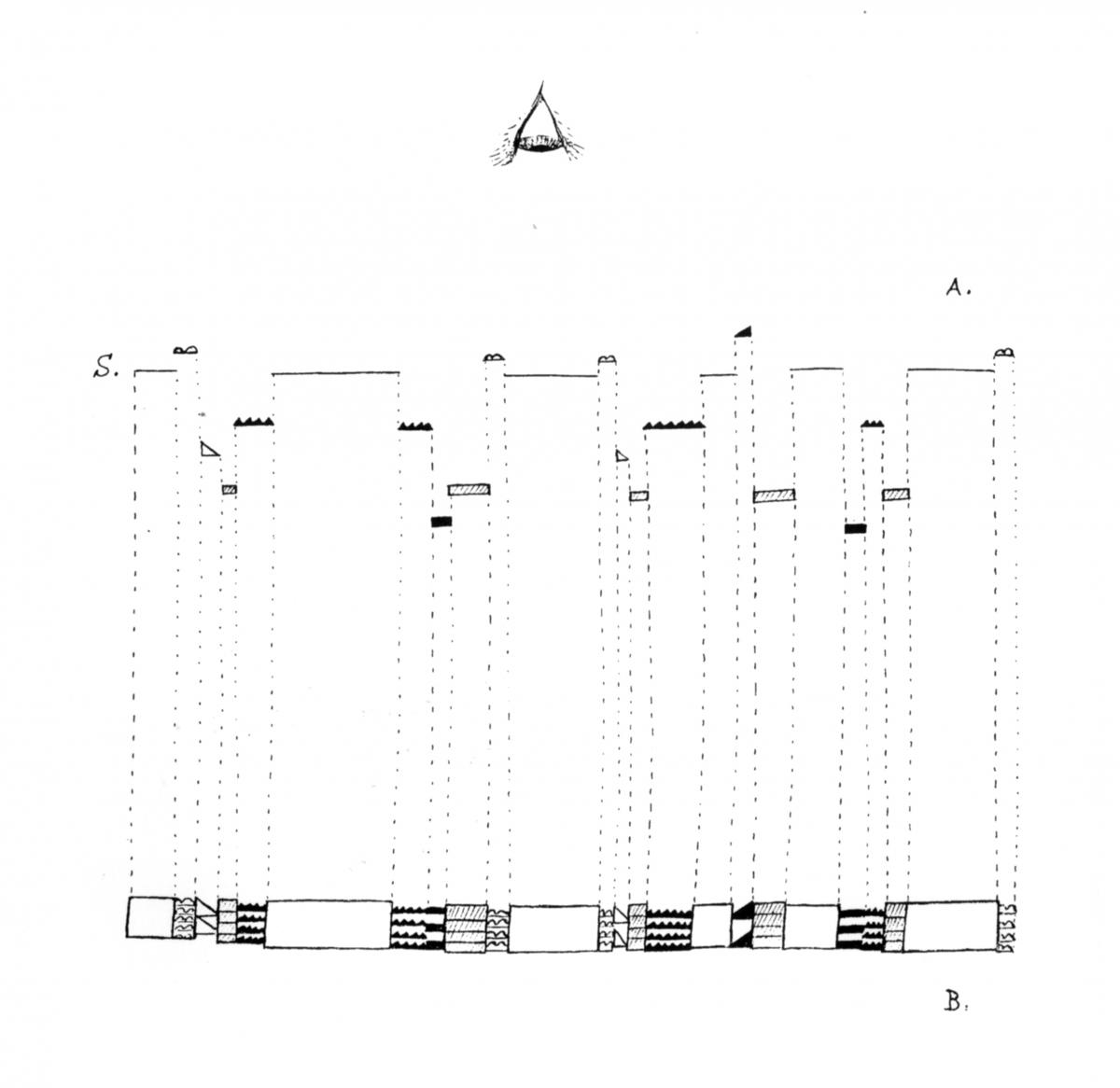From a High-Flying Airplane
For Jan Dop

My style or editing technique is often referred to as “repetition of images”. From a superficial point of view, quite justifiably so. But one could also see it differently. That’s what the eye here is doing in the accompanying drawing, looking at a diagram (A) of a film. The diagram depicts a side-view of that film, showing the different layers in which the images are located, at different distances from the observer. One could imagine that all these image layers run on continuously and that a layer lying further away only becomes visible when gaps occur in layers closer by. In that sense, the image is not repeated, but occasionally emerges – literally – from the depths in which it moves. It can be compared to what one sometimes sees from a high-flying airplane: clouds, clouds beneath them and clouds again beneath those, and if there is a hole in that bottom layer of clouds: a bit of earth. The image of the earth is not repeated, the earth is just there, but it’s removed from sight part of the time.
Every time an image emerges from the depths, something changes: in size, intensity or movement, or in the relationship it establishes with other images – from other layers. In the course of these changes, the argument, the train of thought, the story of the film develops.
In side-view A, the interrupted horizontal line S represents the image layer that coincides with the screen the film is projected on: this layer is located at the precise distance from the observer to the screen. The other image layers, therefore, lie in front of and behind the screen: total fiction, the film’s actual fiction, cinematic space. Drawing B shows a view from above of the same film. The visible images from the different layers are now projected in a flat plane, and this is the sequence of images as it is seen by the drawn eye: the eye hanging over the side-view sees the view from above. It is also the sequence of images that you, the reader, are now seeing. The drawn eye is your eye. The means by which the fiction of changing image distances can be realized in the plane of projection – image size, fixed or “searching” frame, flat or perspectival image composition, continuous or interrupted movement, harmony or contrast of colour and tone (warm-cold, light-dark), connections by narration or by association, conflict or assonance between image and sound, undulation of sound, mixing with noise and music or competition, mixing of text and music or competition, synchronous or off-screen text, rhythmic regularity and variation, in short: the infinite play of separations and connections within the material (they come up in a couple of pieces in the book Zien Kijken Filmen [Seeing Watching Filming]) – are not part of a closed theory of film, but of a theory that presents, explains and expands itself in the living practice of filmmaking in ever-changing circumstances. In times of increasing social degradation, political impotence and the expensive supremacy of cinematic conventions, how can one still plunge into such indemonstrable spatial thinking? A matter of hope, I guess. The hope that instigates playing.
This text was originally published as “Uit een hoogvliegend vliegtuig. Voor Jan Dop,” in Skrien, 123 (winter 1982/83).
With thanks to Nosh van der Lely

